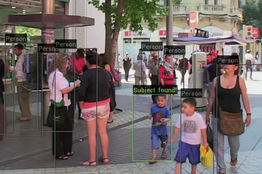Artificial Intelligence Could Soon Enhance Real-Time Police Surveillance
Companies are working with departments to develop body cameras that could identify faces in real time; privacy groups fear loss of anonymity
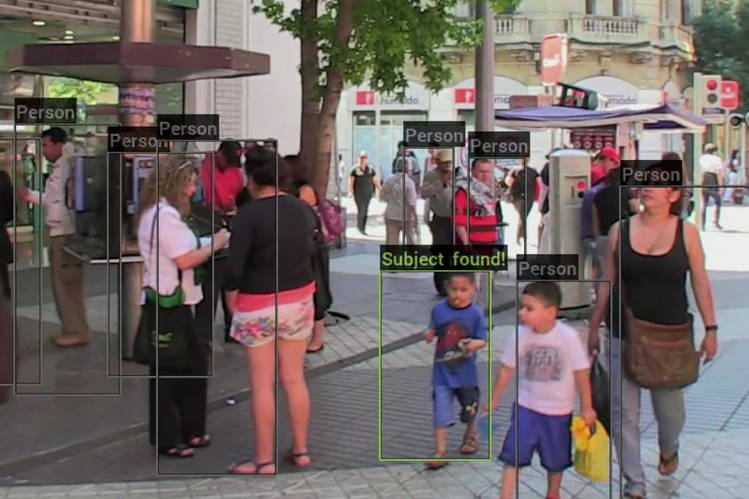
CHICAGO—Several technology companies are working with police departments across the U.S. to develop the capability to add artificial intelligence to video surveillance and body cameras that could identify faces in real time, potentially expanding the reach of police surveillance.
The body-camera technology, expected to be ready by the fall, hasn’t yet been purchased by police departments and is still in the development stage. Police departments, including the New York Police Department, already use facial recognition to review surveillance footage after a crime has occurred.
The new software uses an algorithm to tell an officer on the spot, through a body camera or a video surveillance camera, that it has found a suspect. The officer could then make a decision of whether to stop the suspect or take some other action.
The technology underscores law enforcement’s growing dependence on software and high-tech tools, including gun-shot-detection technology and predictive analytics. The tools have been hailed by law-enforcement, but often raise concerns about privacy.
Looking Out
Police are looking into technology that would enable their body cameras to identify persons of interest. Here’s how:
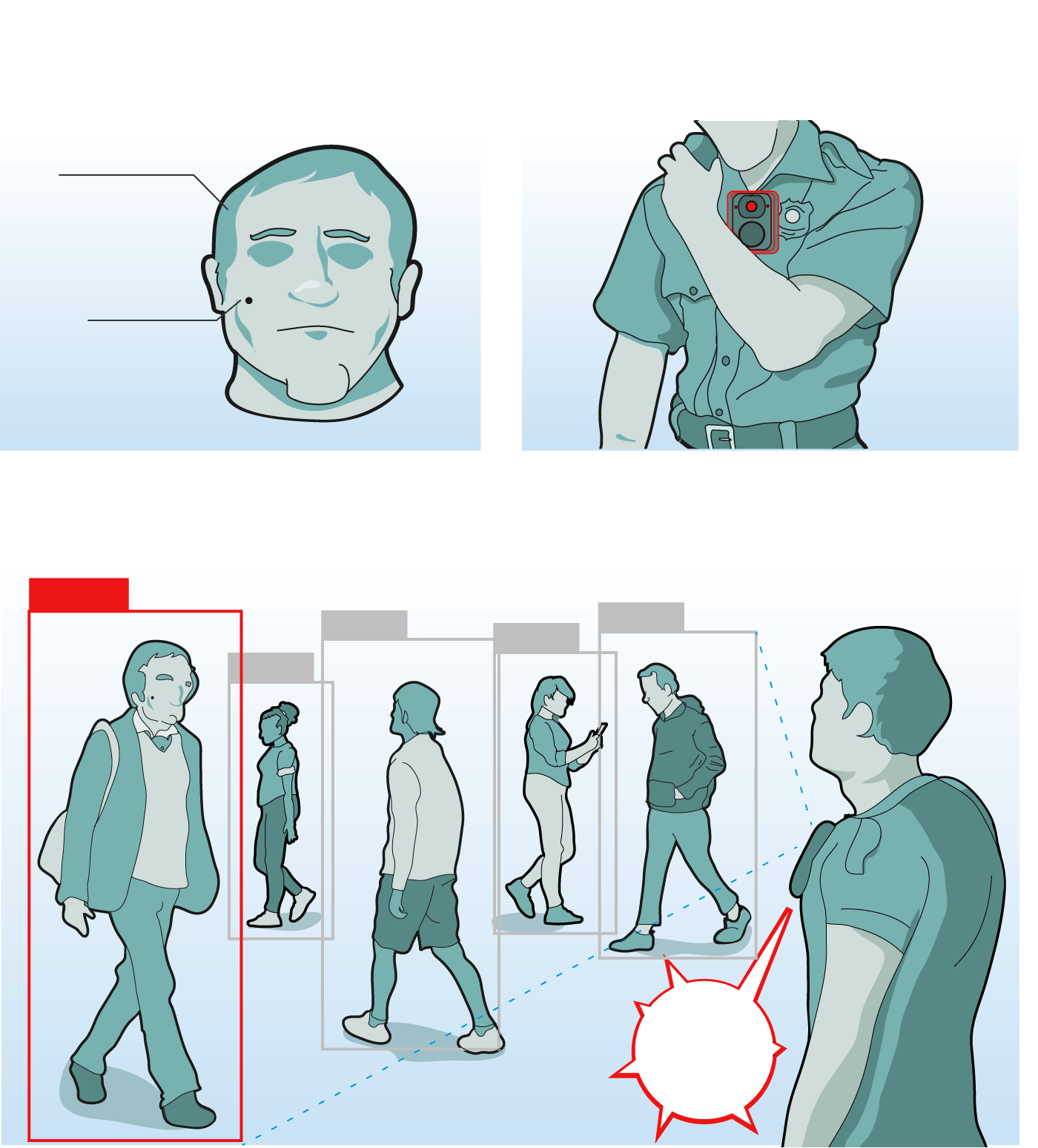
1. An image of the suspect or missing person is obtained from a CCTV, mugshot, or a photograph taken by a witness. The suspect’s characteristics are entered into a database.
2. Body cameras that police officers are wearing in the field are fitted with facial recognition AI. The body camera recieves the database’s information on the suspect.
Hair:
Brown
Gender:
Male
Feature:
Mole on right cheek
3. The police officer’s body cam automatically detects each person in its view and tests whether they match the suspect’s description or photo in real time. If there is a match, the police officer is alerted.
suspect
person
person
person
person
!
!
!
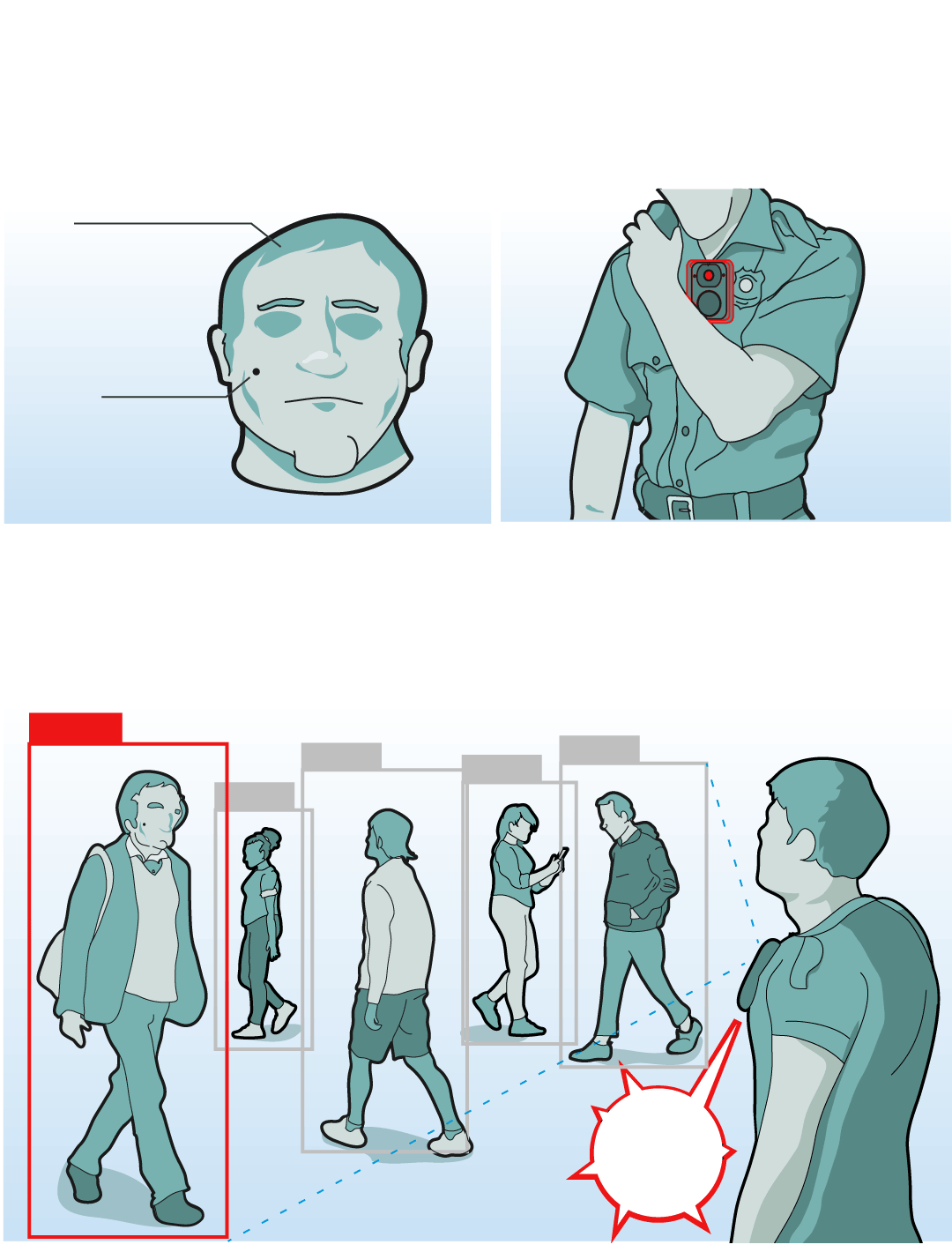
2. Body cameras that police officers are wearing in the field are fitted with facial recognition AI. The body camera recieves the database’s information on the suspect.
1. An image of the suspect or missing person is obtained from a CCTV, mugshot, or a photograph taken by a witness. The suspect’s characteristics are entered into a database.
Hair:
Brown
Gender:
Male
Feature:
Mole on right cheek
3. The police officer’s body cam automatically detects each person in its view and tests whether they match the suspect’s description or photo in real time. If there is a match, the police officer is alerted.
suspect
person
person
person
person
!
!
!
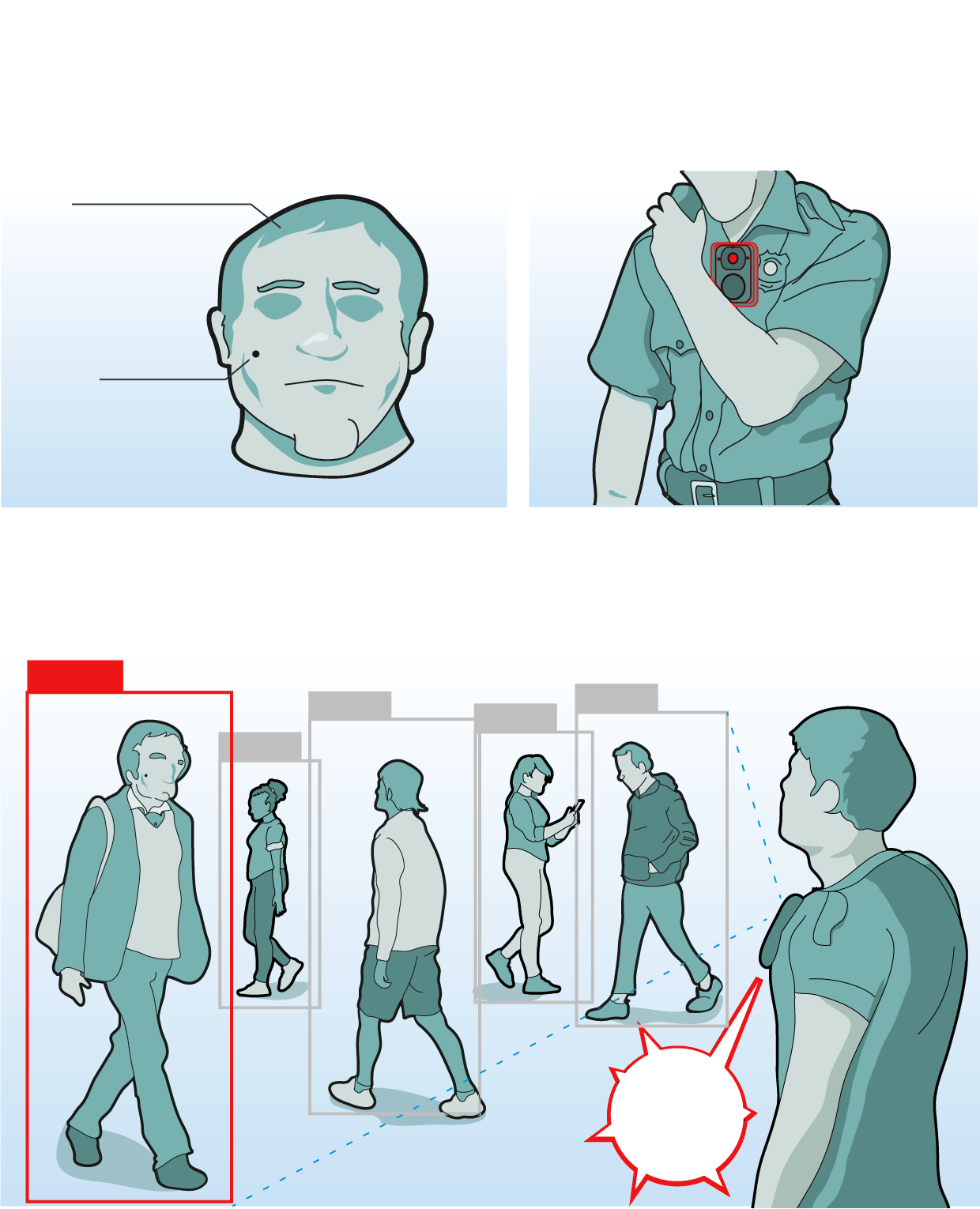
2. Body cameras that police officers are wearing in the field are fitted with facial recognition AI. The body camera recieves the database’s information on the suspect.
1. An image of the suspect or missing person is obtained from a CCTV, mugshot, or a photograph taken by a witness. The suspect’s characteristics are entered into a database.
Hair:
Brown
Gender:
Male
Feature:
Mole on right cheek
3. The police offcier’s body camera automatically detects each person in its view and tests whether they match the suspect’s description or photo in real time. If there is a match, the police officer is alerted.
suspect
person
person
person
person
!
!
!

1. An image of the suspect or missing person is obtained from a CCTV, mugshot, or a photograph taken by a witness. The suspect’s characteristics are entered into a database.
Hair:
Brown
Gender:
Male
Feature:
Mole on right cheek
2. Body cameras that police officers are wearing in the field are fitted with facial recognition AI. The body camera recieves the database’s information on the suspect.
3. The police officer’s body camera automatically detects each person in its view and tests whether they match the suspect’s description or photo in real time. If there is a match, the police officer is alerted.
person
suspect
person
person
person
Source: Motorola Solutions
Chicago-based Motorola Solutions , a maker of police communications and body-camera technology, has partnered with artificial-intelligence company Neurala to produce a body-worn camera, ready for deployment this fall, that executives say will learn to identify a suspect or a missing child and spot them in a crowd. The technology would get smarter by taking in more data over time.
“This frees up some of your cognitive space so you aren’t trying to do a thousand things at one time,” said a sergeant at a Midwest police force, who is working with Motorola to provide feedback on the technology. His department was interested in acquiring it when it rolls out, he said.
Motorola said it is working with a number of departments around the country. Several declined to comment.
Moving the technology into real-time creates the possibility of police mistakes based on technology that may not always be accurate—especially for darker faces, which are harder for the technology to match accurately than those of lighter-skinned faces—and raise alarms over the loss of privacy, rights groups say.
“All of the sudden we have lost our ability to be relatively anonymous in society, to be able to walk about without fear that the government is tracking our every move,” said Jennifer Lynch, an attorney with the Electronic Frontier Foundation, a nonprofit privacy organization based in San Francisco, which recently wrote a report highlighting issues with the use of facial-recognition technology by law enforcement.
Companies say they have taken steps to avoid bias by feeding millions of publicly available photos into the algorithm and testing it to identify false positives and matches.
“We’ve worked really hard on training [the algorithm] with a diverse data set to make sure that it is balanced and unbiased,” said Paul Steinberg, Motorola Solution’s chief technology officer.
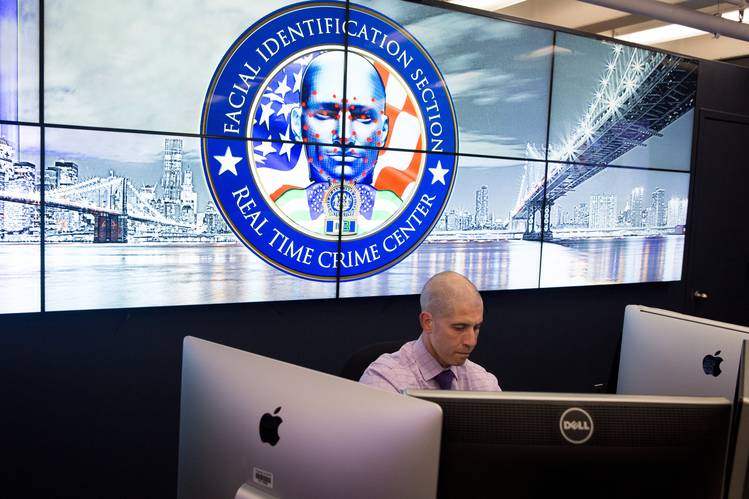
Several smaller companies are working to integrate artificial intelligence into existing video-surveillance systems, able to identify subjects or people of interest by matching faces with a database of millions of photos.
TaeWoo Kim, chief scientist at One Smart Labs, a New York-based startup that is working on such software, said the technology is “creepy and a bit Big Brother-y,” but said it is “purely intended to fight crime, terrorism and track wanted subjects.”
Dozens of U.S. law-enforcement agencies use facial recognition to run photos of suspects through databases of mug shots or driver’s license photos. Researchers at the Georgetown Law School estimated in 2016 that one in every two Americans adults—117 million people—are in facial-recognition networks used by law enforcement in the country, a number that is likely higher today.
In New York City, a detective investigating a crime pulls an image from one of the thousands of surveillance cameras in the city and forwards it to investigators in the facial-identification section, who cross-reference it with a database of mug shots to see if there is a match.
This process, however, only happens after a crime is committed. It also includes a peer review session, in which a group of officers must review the match to confirm the result. Those safeguards could be removed with the new real-time technology.
William Bratton, the former commissioner of the NYPD, says that the public was similarly worried about DNA testing when the technology first emerged. The technology has been credited in freeing wrongfully convicted people from prison.
“From my perspective, the plus far outweighs the minuses,” Mr. Bratton said.
Others, however, say that even if the technology worked well, it wouldn’t be immediately embraced by police departments.
“There’s a finite pool of money to purchase this sort of thing and it is super controversial,” said Daniel Zehnder, a recently retired Las Vegas police captain who ran the department’s body-camera program. “Civil-liberties groups would certainly have many questions and issues with it.”
—Zolan Kanno-Youngs contributed to this article.
Write to Shibani Mahtani at shibani.mahtani@wsj.com and Zusha Elinson at zusha.elinson@wsj.com









![[https://m.wsj.net/video/20180405/040518elkhart/040518elkhart_167x94.jpg]](./wsj_files/040518elkhart_167x94.jpg)
![[https://m.wsj.net/video/20180403/040318chinatrade1/040318chinatrade1_167x94.jpg]](./wsj_files/040318chinatrade1_167x94.jpg)
![[https://m.wsj.net/video/20180404/youtubeshooter_6/youtubeshooter_6_167x94.jpg]](./wsj_files/youtubeshooter_6_167x94.jpg)
![[https://m.wsj.net/video/20180404/040318seib1/040318seib1_167x94.jpg]](./wsj_files/040318seib1_167x94.jpg)
![[https://m.wsj.net/video/20180402/040318ptechdnd3/040318ptechdnd3_167x94.jpg]](./wsj_files/040318ptechdnd3_167x94.jpg)









